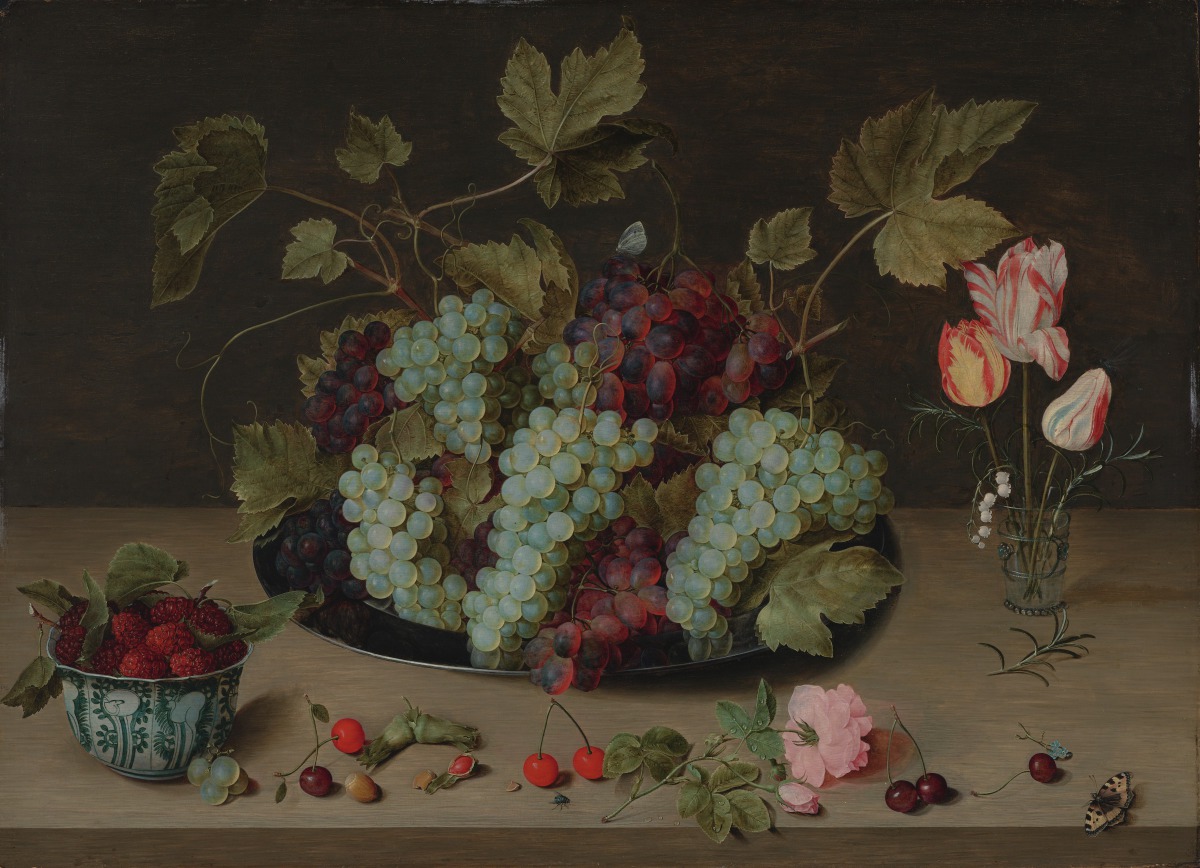
Still Life with Grapes, Flowers, and Berries in a Wanli Bowl (Primary Title)
Isaac Soreau, Flemish, 1604 - after 1638 (Artist)
In religious paintings of the 1400s and 1500s, flowers, fruits, and other objects often held symbolic meaning. However, in the 1600s still lifes of flowers and fruits became a more secular and important kind of painting.
Viewers and patrons particularly valued the artist’s skill in representing luxurious objects with beautiful textures and colors. Here, ripe raspberries sit in an expansive Chinese porcelain bowl; several tulips stand in a vase at right. The tulip was immensely popular in the early 1600s, and new varieties were often extremely expensive.
Two views now exist regarding the artist’s hidden moral messages in this painting. The traditional view asserts that the fly (a symbol of death and decay), the butterfly (a symbol of renewed life), and the grapes (a symbol of Christ’s sacrifice) are reminders that worldly pleasures are fleeting while spiritual values endure.
The other view allows that while earlier symbolism might survive residually, most viewers at the time would have looked at the objects in the painting with appreciation for their beauty and the skill with which they have been rendered.
Some object records are not complete and do not reflect VMFA's full and current knowledge. VMFA makes routine updates as records are reviewed and enhanced.
